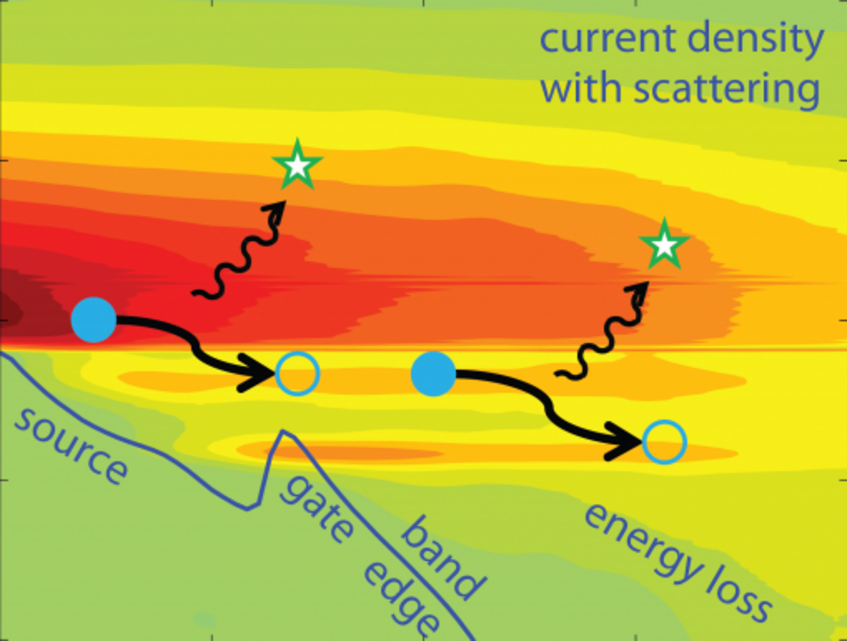Transport and electron scattering in functional materials

Transport and electron scattering in functional materials
Charge transport plays a key role in opto-electronic, photovoltaics, photo-catalysis and thermoelectricity. As electronic devices shrink, a quantum mechanical description of their properties becomes mandatory. Although this has been realized for quite some time, modelling of transport in electronic devices is still very often based on Boltzmann’s transport equation. Nowadays, this is sometimes supplemented by a description based on a quantum mechanical treatment, for instance the Kubo-Greenwood or Landauer-Büttiker formalism. However, if quantum mechanics are used, the transport of electrons is commonly assumed to be ballistic, i.e. the electrons are not scattered by phonons, electrons or other defects. This might be an even more important and restrictive approximation than the one used in Boltzmann’s transport equation. So, ideally the quantum mechanical description of the electrons should be accompanied by an appropriate description of the scattering of electrons by other quasi-particles. Our goal is to improve the ab initio description of transport in electronic devices addressing three key scattering processes.
i. If the electrons carry sufficient kinetic energy, they can excite an Auger pair.
ii. For gapped systems and at low energies, the dominant scattering processes are electron-phonon scattering.
iii. And finally scattering of electrons at defects, which often also involves the emission of a phonon to accommodate the momentum of the incoming electron, is important.
The project aims to evaluate these three processes in a single coherent framework, the VASP program, a first principles codes distributed worldwide and developed by the authors of this proposal. It needs to be emphasized that the required matrix elements are already implemented in VASP, but not in a manner suitable for practical calculations. For instance, (i) the Auger process, describes that an electron loses kinetic energy, and the lost energy is used to excite an electron-hole pair. This is the same process as considered in the GW approximation. (ii) The electron-phonon coupling is, in principle, available in the linear-response code of VASP. Finally, scattering at defects involving emission of a phonon is related to point (ii), but requires calculations for large unit cells to model the defect combined with finite size scaling arguments. Finally, the matrix elements need to be calculated on dense k-point grids, or some sort of Wannier interpolation needs to be introduced to make the calculations routinely possible for complex functional materials.
